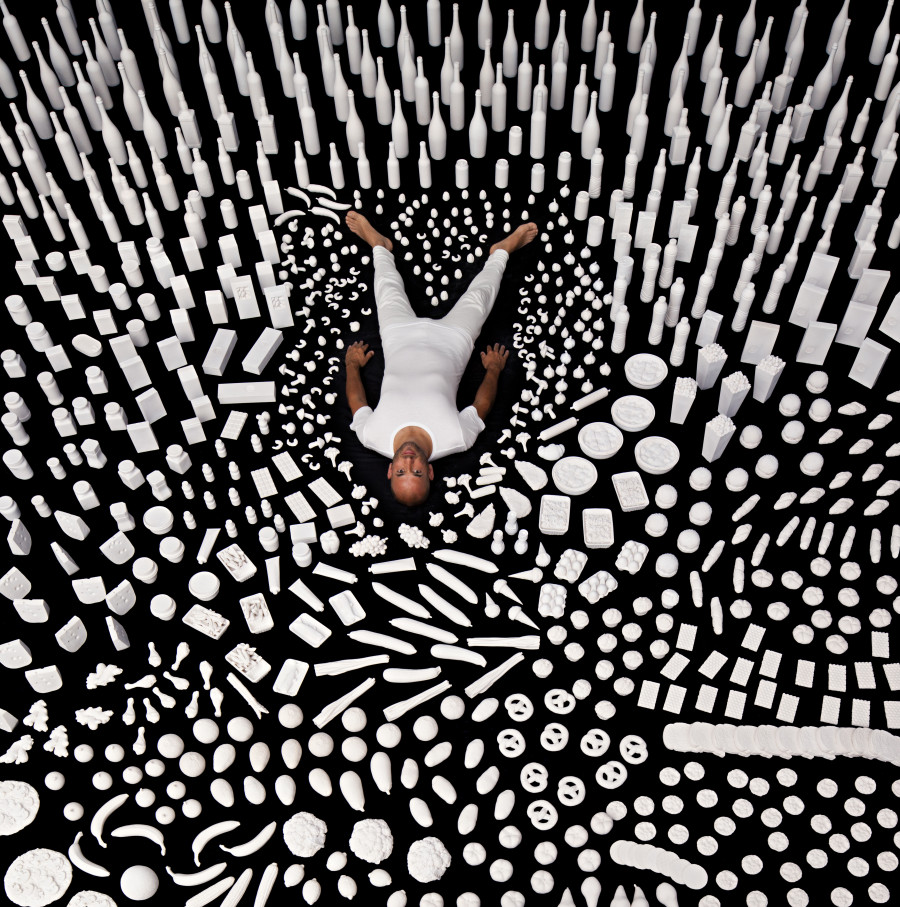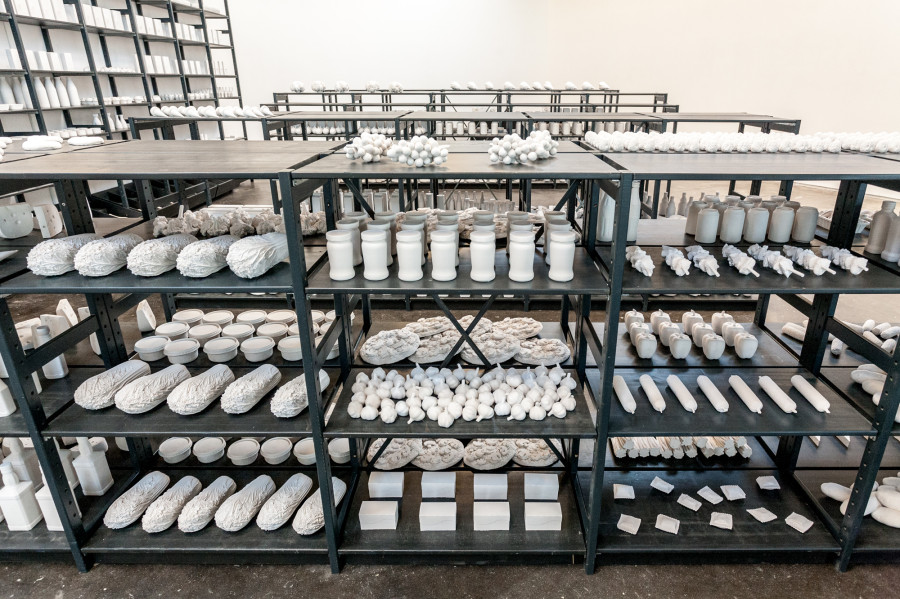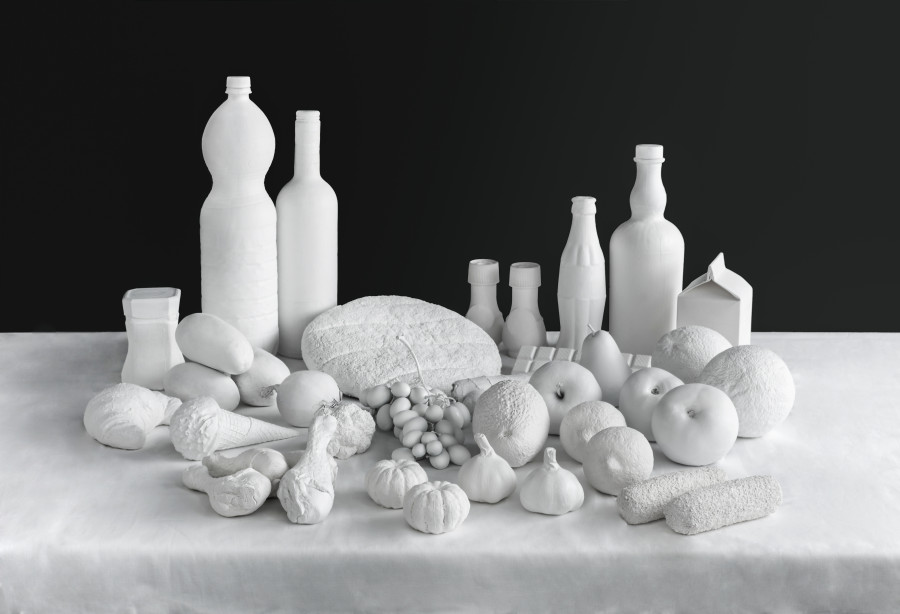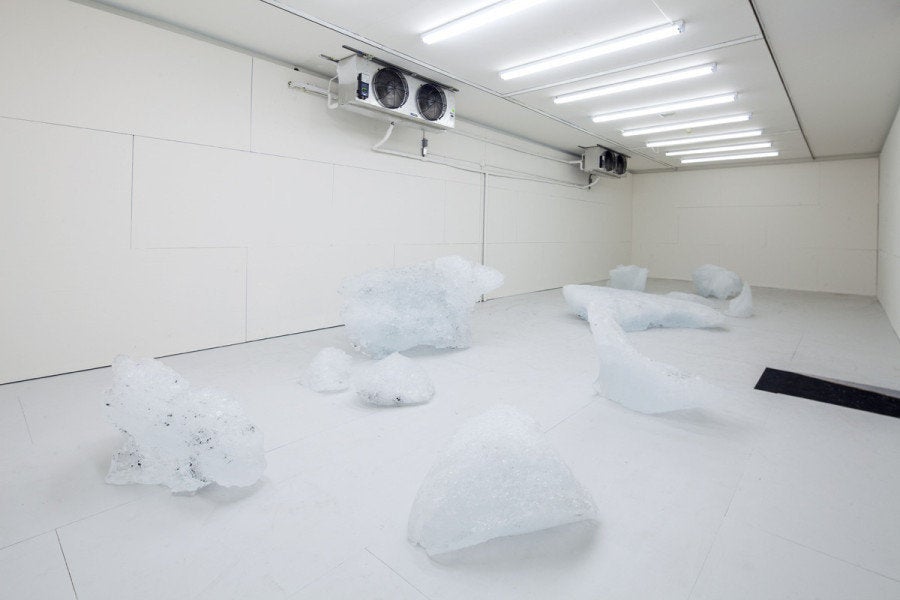
In one year, Itamar Gilboa consumed, among other things, 19 apple cakes, 117 bananas, 113 potatoes, 22 pizzas, 111 liters of red wine, 37 burgers, 307 cans of diet cola, 196 cookies, 31 apples and 25 liters of milk. He knows this because he is an artist, and as part of his practice, he rigorously documented each and every item he consumed for 365 days.
Yes, Gilboa is self-professed data obsessive, interested in converting details from his personal and social life into quantifiable facts and figures. In particular, after moving to Amsterdam from Tel Aviv to study art, Gilboa was fascinated by the changes he noticed in his eating habits. "I found myself eating less and less vegetables and more meat," he wrote to The Huffington Post. "My favorite Israeli hummus had been replaced with local Dutch cheese, and I'm embarrassed to mention the vast amount of red wine that was part of my studio routine."

Gilboa ended up integrating his eating patterns into his studio routine itself. Every day he'd record each item he ate or drank, creating a thorough portrait of his consumption in hard numbers and details. One sample entry, for example, reads: "Tuesday -- coffee, cereal with milk, a glass of water, two pieces of toast with cheese and salami, Diet Coke, beer, chicken soup, hummus, tahini, two slices of bread, seven shots of whiskey, duck with carrots in soy sauce, two glasses of water."
To adapt this data into a work of art, Gilboa resolved to create a pop-up sculptural supermarket; a striking aesthetic environment that doubled as a visual manifestation of everything he'd ingested. After a year of delicious research, Gilboa narrowed his consumption experience down to the 150 different products he regularly returned to. He then made resin-cast molds of each product and duplicated them according to his volume of intake for each. Stripping the food and drink of their particularities and brand names, Gilboa crafted an army of white, archetypal food items.

Beyond his interest in personal-data narratives, Gilboa was also prompted by the food-related issues plaguing so many world citizens, whether suffering from hunger or obesity. Around the world, humans waste approximately 1.3 billion tons of food each year, a quantity so massive it's nearly impossible to visualize. With Gilboa's stark yet overwhelming portrait of a single human's consumption and waste, one can begin to process the massive aggregate of food goods worldwide.
Helping to heal the world's fractured relationship to food was another one of Gilboa's ambitious goals, which is why he dubbed his sculptural experience the "Food Chain Project." Each individual part of the installation, whether a garlic clove or a chicken leg, is available for sale. The proceeds will be donated to Fairfood International and Youth Food Movement, both organizations that deal with world food issues.
"What I consumed is turned into art, which, when sold, becomes food again, thereby creating a food chain," Gilboa explained.

The juxtaposition of minimalist white sculptures and crammed edible goods yields a jarring depiction of the contemporary eating habits that most often go unnoticed. What would your food journal look like? What shape would your sculptural supermarket take? These are only some of the questions bound to arise when perusing Gilboa's pristine pop-up space.
Gilboa's project will be on view as part of the FCP at Amsterdam Art Fair until May 31.
